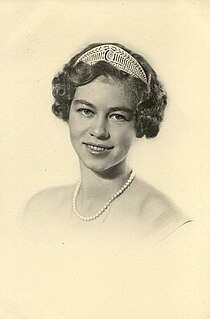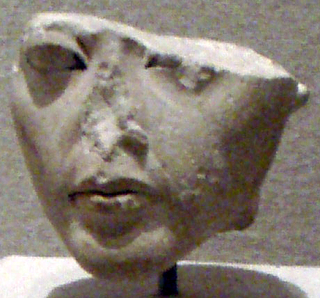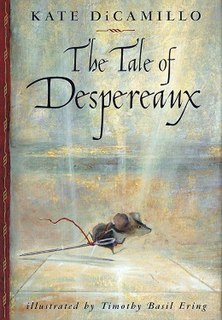This article does not cite any sources .(May 2020) (Learn how and when to remove this template message) |
This is a list of characters from the fictional nation of Ile-Rien, the setting of five of Martha Wells' fantasy novels.
This article does not cite any sources .(May 2020) (Learn how and when to remove this template message) |
This is a list of characters from the fictional nation of Ile-Rien, the setting of five of Martha Wells' fantasy novels.
The Fontainon dynasty is the ruling family of Ile-Rien, governing for the several centuries that comprise the time-span of the books.
The deceased husband of Ravenna Fontainon, he was bestowed the rights and privileges of a regnant monarch by his father-in-law, the previous king. He is the father of Roland by his consort Ravenna, and the father of Kade Carrion by Moire, the Queen of Air and Darkness a visiting dignitary to his court. He was notoriously petty and ineffectual, and was particularly cruel to his son, the future King Roland. Fulstan is deceased at the beginning of 'The Element of Fire.'
The daughter of the previous Fontainon king, widow of King Fulstan, and doyenne of House Fontainon, she is the true ruler in Ile-Rien. In her youth, she was an admired beauty with pale skin and reddish auburn hair. As dowager queen, she maintains her son Roland's reign, seeing to its stability. While queen consort, she was a dynamic leader in the war against the hostile Bisrans, often taking command in the field directly. Feared by her courtiers and ambassadors to her court, she is regarded as a brilliant and capable ruler. Her son Roland is a great disappointment to her, as was her lack of additional children. She hand selected her daughter-in-law Queen Falaise in the hopes that she could train her to be a fitting successor, able to temper the reckless excesses of her son. Queen Ravenna's long-time lover, Thomas Boniface is the captain of her squadron of dedicated armsmen, The Queen's Guard. In the later books, she is a celebrated national heroine, and has many monuments dedicated to her.
The son of the late Fulstan and Ravenna, the scion of House Fontainon, King Roland is a weak king, prone to rash decision-making, and excessively vulnerable to flattery. His closest companion is Denzil, the Duke of Alsene, an ambitious kinsman who has designs upon the throne. Roland's wife is the foreign-born Falaise. The two are barely acquainted with one another, leading largely separate lives at court.
Roland's queen, she is the third daughter of nobles from neighboring Umberwald, and a princess in her own land. Originally a studious, pensive young woman, she was selected to be the future queen by Ravenna, who had hopes of molding her as a protégé, able to temper the excesses of Roland and provide wise counsel. As a young queen, she assembled a flattering entourage of poets and minstrels and had little interest in statecraft.
Also known as Princess Katherine Fontainon, she is the bastard daughter of King Fulstan and Moire, the Queen of Air and Darkness, a powerful fay ruler in her own lands. Half-human and half-fay, Kade is a talented natural sorceress, and was reared in the royal palace in Vienne until she inadvertently unleashed her magic in a most destructive manner. Neglected and abused by King Fulstan, she shared a bond with Roland, who also suffered at the hands of their father. Decidedly un-regal, she eschews the trappings of her royal station, much to the annoyance of Queen Ravenna. She is ultimately rejected from the royal palace and court life. At the beginning of The Element of Fire, she has assumed her mother's title and station.
A descendant of Queen Ravenna, she rules Ile-Rien during 'The Death of the Necromancer.' Her name has not been revealed. In that book, she is an unmarried young woman who "uses candor like a loaded pistol," and is sharp witted and observant. She suggests, only half-jestingly, that she marry Nicholas Valiarde for dynastic reasons.
In The Fall of Ile-Rien trilogy, the same, yet-unnamed, queen rules, and has evidently married. She is the mother of at least two children, Prince Ilaron and Princess Olympe.
As the invasion progresses, and the conquest of Vienne seems imminent, the queen makes arrangements to relocate the government and set up in exile in neighboring Parscia. Fearful of being able to safely make her escape, she separates the royal family, sending her children away via different routes, along with various government documents and items of regalia.
The older child of the ruling queen in The Fall of Ile-Rien trilogy.
In The Ships of Air, it was revealed that the Queen, fearful of being able to escape to Parscia to establish a government-in-exile against the onslaught of the Gardier, separated the royal family. Prince Ilaron was sent away with trusted ministers to escape via the railroads. He is the Crown Prince of Ile-Rien.
The younger child of the ruling queen in The Fall of Ile-Rien trilogy.
In The Ships of Air, it was revealed that the Queen, fearful of being able to escape to Parscia to establish a government-in-exile against the onslaught of the Gardier, separated the royal family. Princess Olympe was sent with trusted ministers such as Count Delphane and Lady Aviler, her duenna, to escape aboard the Queen Ravenna. Included in the princess' baggage was King Fulstan's coronation crown, as well as the royal charter.
Originally a body of armsmen placed directly at the command of the Queen of Ile-Rien, they have a celebrated history of valor and courage. They are a different body than the Royal Guard, which serves at the direction of the King of Ile-Rien. They are headquartered within the royal palace in Vienne. At the beginning of The Element of Fire, they are both an elite armed force and the queen's personal bodyguard. In later books, they have developed into an intelligence gathering agency, as well as remaining the bodyguard of the queen and her chosen designees, often guarding them covertly.
The captain of the Queen's Guard and one of the main characters in The Element of Fire. He was once Queen Ravenna's lover and remains a dedicated protector until the end of her life. At the end of the Element of Fire, he falls in love with the half-fey princess Kade Carrion.
A family of wealthy commoners in the beau monde of Ile-Rien, they are descended from the infamous exiled traitor, Denzil, Duke of Alsene. Their primary residence is the sprawling, ramshackle manor house, Coldcourt, outside of Vienne. They become known as a family of eccentric scholars and art collectors.
A descendant of the infamous traitor Denzil, Duke of Alsene, his mother Sylvaine Valiarde married into the Alsene family, only to ultimately reject her husband and flee with her infant son, Nicholas, to Vienne, the capital. They live in poverty until she dies, and then Nicholas moves out on the streets as the leader of a gang, until he gets caught. A natural philosopher and widower in need of an intelligent heir, Edouard Villier, takes him out of prison and raises him.
Nicholas ends up at Lodun, studying to become a doctor, until Edouard is arrested, tried, and eventually hung for necromancy, despite the fact that he wasn't even a sorcerer. Knowing that his foster father was innocent, Nicholas becomes obsessed with killing Count Rive Montesq, the man who framed Edouard.
Nicholas was raised under the surname 'Valiarde,' although his true lineage was no great secret. In Death of the Necromancer, he lives the life of a callow ne'er-do-well art collector, while living a daring double life as 'Donatien,' a mysterious master-thief bedevilling the mansions and galleries of Ile-Rien. His lover, later wife, was Madeline, a celebrated actress who also dabbled in his life of masquerades and thievery. While he was unmarried the Young Fontainon Queen only half-jestingly suggested that she may marry him, since he would be a fitting consort due to his once-regal bloodlines.
In the Fall of Ile-Rien trilogy, Nicholas has disappeared, leaving his daughter by Madeline, Tremaine, the sole possessor of Coldcourt. He is later revealed to be a spy against the Gardier.
The sullen, moody yet highly intelligent daughter of Nicholas and Madeline, she is the main character in the Fall of Ile-Rien trilogy, as a researcher in a covert government project trying to unlock the secrets of Gardier weaponry. She is the sole possessor of Coldcourt, and the object of several unwelcome suitors.
Tremaine is able to use one of her Valiarde heirlooms, an Arisilde Sphere, to discern the origins of The Gardier and the nature of their magical weapons. She begins to travel between the world in which Ile-Rien is situated, the world of the Syprians, and the homeworld of the Gardier. She later takes refuge on the Queen Ravenna.

Alexandra Feodorovna was Empress of Russia as the spouse of Nicholas II—the last ruler of the Russian Empire—from their marriage on 26 November 1894 until his forced abdication on 15 March 1917. Originally Princess Alix of Hesse and by Rhine at birth, she was given the name and patronymic Alexandra Feodorovna when she converted and was received into the Russian Orthodox Church. She and her immediate family were all killed while in Bolshevik captivity in 1918, during the Russian Revolution. She was later canonized in 2000 in the Russian Orthodox Church as Saint Alexandra the Passion Bearer.

Princess Alice of Battenberg was the mother of Prince Philip and mother-in-law of Queen Elizabeth II.

Victoria Eugenie of Battenberg was Queen of Spain as the wife of King Alfonso XIII. A Hessian princess by birth, she was a member of the Battenberg family, a morganatic branch of the House of Hesse-Darmstadt. She was a relative of the British royal family as a granddaughter of Queen Victoria. Unlike other members of the Battenberg family, who were accorded the lower rank of Serene Highness, Victoria Eugenie was born with the rank of Highness due to a Royal Warrant issued in 1886 by Queen Victoria.

Princess Olga of Greece and Denmark was a granddaughter of King George I of Greece and wife of Prince Paul, Regent of the Kingdom of Yugoslavia.

Frederica of Hanover was Queen consort of Greece from 1947 until 1964 as the wife of King Paul, thereafter Queen mother.

Ankhesenamun was a queen of the Eighteenth Dynasty of Egypt. Born Ankhesenpaaten, she was the third of six known daughters of the Egyptian Pharaoh Akhenaten and his Great Royal Wife Nefertiti, and became the Great Royal Wife of her half-brother Tutankhamun. The change in her name reflects the changes in Ancient Egyptian religion during her lifetime after her father's death. Her youth is well documented in the ancient reliefs and paintings of the reign of her parents. Tutankhamun and Ankhesenamun shared the same father but Tutankhamun's mother has recently been identified through DNA analysis as one of Akhenaten's sisters, a daughter of Amenhotep III.

Princess Mary, Duchess of Gloucester and Edinburgh was the eleventh child and fourth daughter of King George III of the United Kingdom and his consort Charlotte of Mecklenburg-Strelitz.

Princess Elena of Romania is the second daughter of King Michael I and Queen Anne of Romania.

Prince Christopher of Greece and Denmark was the fifth and youngest son and youngest child of King George I of Greece, belonging to a dynasty which mounted and lost the throne of Greece several times during his lifetime. Much of his life was spent living abroad.

Grand Duchess Elena Vladimirovna of Russia, sometimes known as Helen, Helena,Helene,Ellen,Yelena,Hélène, or Eleni, was a Russian grand duchess as the only daughter and youngest child of Grand Duke Vladimir Alexandrovich of Russia and Duchess Marie of Mecklenburg-Schwerin. Her husband was Prince Nicholas of Greece and Denmark and they were both first cousins of Emperor Nicholas II of Russia.

This classic Tale of Despereaux is a 2003 children's fantasy book written by Kate DiCamillo. The main plot follows the adventures of a mouse named Despereaux Tilling, as he sets out on his quest to rescue a beautiful human princess from the rats. The book won the 2004 Newbery Medal award.

Princess Anastasia Petrović-Njegoš of Montenegro was the daughter of King Nikola I Petrović-Njegoš of Montenegro (1841–1921) and his wife, Milena Vukotić (1847–1923). Through her second marriage, she became Grand Duchess Anastasia Nicholaievna Romanova of Russia. She and her sister "Militza", having married Russian royal brothers, were known colloquially as the "Montenegrin princesses" during the last days of Imperial Russia, and may have contributed to its downfall by the introduction of Grigori Rasputin to the Empress Alexandra.

Princess Elena of Montenegro, or more commonly known as Queen Elena of Italy was the daughter of King Nicholas I of Montenegro and his wife, Milena Vukotić. As wife of Victor Emmanuel III of Italy, she was Queen of Italy from 1900 until 1946, Empress consort of Ethiopia from 1936 until 1941 and Queen consort of the Albanians from 1939 until 1943.
Hermann Leiningen or Prince Hermann Friedrich of Leiningen is the younger son of Prince Karl of Leiningen and his wife Princess Marie Louise of Bulgaria. Hermann was born in Toronto, Ontario, as Hermann Friedrich Fernando Roland. Through his mother, Hermann is a grandson of King Boris III of Bulgaria, a great-grandson of King Victor Emmanuel III of Italy and great-great-grandson of King Nicholas of Montenegro. Through his father, he is a great-great-great grandson of Queen Victoria, as well as Tsar Alexander II of Russia. According to Marlene Eilers, Hermann of Leiningen belongs to the Eastern Orthodox Church. His paternal grandmother was Grand Duchess Maria Kirillovna Romanova of Russia and his maternal grandmother was Princess Giovanna of Savoia, daughter of King Victor Emmanuel III of Italy.
Ile-Rien is a fictional country which is the setting for five fantasy novels by Martha Wells. It is a centralized monarchy governed by the Fontainon dynasty, governing from their ornate capital of Vienne. It is also the home of the university-city of Lodun, a great center of learning, producing world-renowned scholars in medicine, law and sorcery. Its neighbors are the nations of Adera, Umberwald and Parscia, as well as Bisra, its long-standing enemy. Ile-Rien shares a coastline along the Western Ocean with Parscia.
This is list of geographical places presented in five of Martha Wells' fantasy novels, revolving around the fictional country of Ile-Rien.

Princess Alice of the United Kingdom was the Grand Duchess of Hesse and by Rhine from 1877 to 1878. She was the third child and second daughter of Queen Victoria and Prince Albert. Alice was the first of Queen Victoria's nine children to die, and one of three to be outlived by their mother, who died in 1901.

Royal Exile is the first novel in the Valisar trilogy, by Australian fantasy author Fiona McIntosh. It was first published in September 2008 by HarperVoyager Royal Exile follows the story of Leo, a young Valisar Royal whose world is destroyed by the Barbarian, Loethar, as he attempts to win back his throne and rid his land of the evil barbarian horde. The story is continued in A Tyrant's Blood.
The Huntsman is a fictional character in Snow White.
The Death of the Necromancer is a 1998 fantasy novel by Martha Wells. It was first published by Eos/Harper Collins.